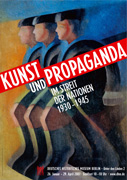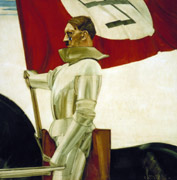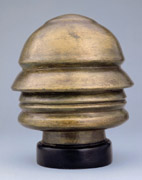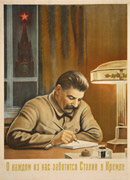


Introduction | Art and Politics | Images of the Heads of State | Images of the Individual and Society
Images of Work and Development | Images of War | A Difficult Heritage
Traditionally, the image of the head of state is the central symbolic element in political iconography. The democracies and dictatorships of the twentieth century used the image of the head of state as a way of representing state policies and as a means of strengthening national identity.
The states used the most modern advertising strategies to publicise the likenesses of their national leaders. The mass media of cinema and photography were particularly effective in ensuring that pictures of the rulers were visible everywhere. The fine arts helped to shape and disseminate an image of the person and their achievements and concerns.
The totalitarian states created special institutions which exercised strict control and rigid censorship to dictate the visual presence of the head of state. But even in the United States, pictures of the president had to be approved by the administration’s press officials.
.



